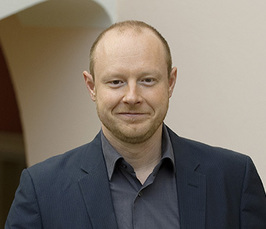Talk by Prof. Christian Ruff, University of Zurich
Dazed and confused? Neural origins of behavioral variability in value-based food choice.
- Date: Jan 22, 2019
- Time: 02:00 PM - 03:00 PM (Local Time Germany)
- Speaker: Christian Ruff, PhD
- Laboratory for Social and Neural Systems Research, Department of Economics, University of Zurich, Switzerland
- Location: MPI for Metabolism Research, Gleueler Strasse 50, 50931 Köln
- Room: Seminar room 1
- Host: Dr. Marc Tittgemeyer
- Contact: marc.tittgemeyer@sf.mpg.de

Food choices can vary strongly across time even for stable environments and contexts, thus violating axioms of transitivity. Classical behavioral choice models from psycholo-gy and economics subsume this variability in unspecific noise terms that have no clearly defined mental basis. In this talk, I propose that the variability of food choices can emerge naturally from the probabilistic nature of value computations instantiated by neuronal populations in the ventro-medial prefrontal cortex, and by the properties of the mechanisms by which these computed values are conveyed to other choice-related areas. I will first show that distributed patterns of neural activity in the vmPFC, as measured with fMRI, encode probability distributions over stimulus values and that this probabilistic information can be used to derive estimates of both the preferences themselves and of the associated uncertainty.
I will then present a biologically-grounded model of these computations that allows organisms to access and exploit the uncertainty associated with their preferences in order to optimally guide value-based choices. This model accurately predicts the outcome and response speed of preference-based decisions and is able to explain the emergence of framing-related choice biases. This proposed coding scheme makes it possible for humans to optimally combine multiple sources of information for decisions and may pave the way for mechanistic explanations of puzzling distortions often observed in food- and non-food-related economic choices.
Finally, I will show with combination of EEG and tACS data that gamma-band neural coherence between (presumably) medial prefrontal and parietal areas can be causally required for a stable incorporation of these computed values into choices. This suggests variability in information transmission in neural networks as a second possible neural origin of the variability of value-based choices.